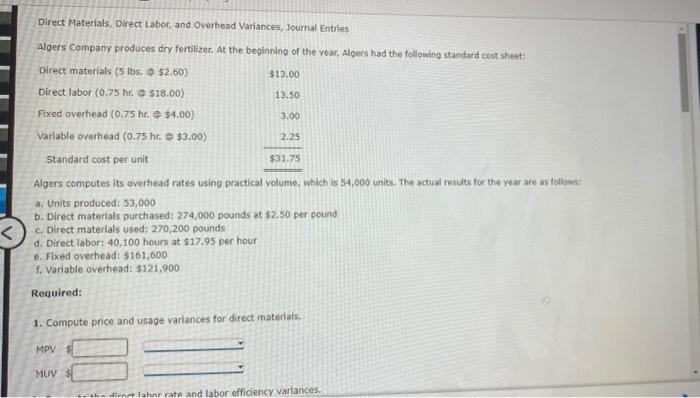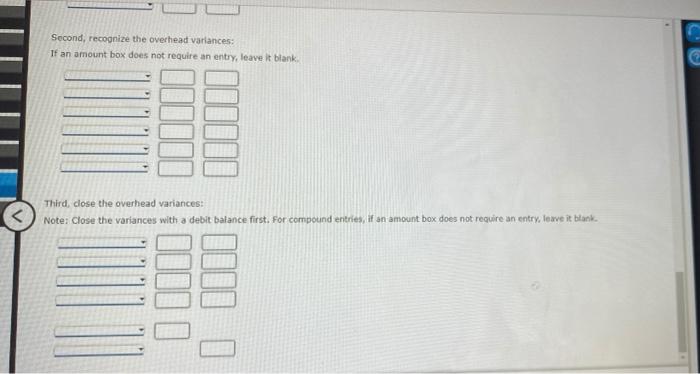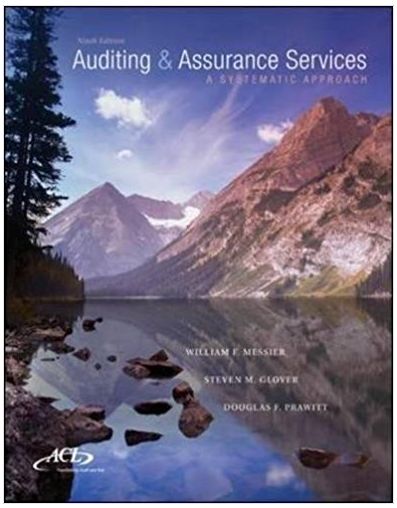Direct Materials, Direct Labor, and Overhead Variances, Journal Entries Algers Company produces dry fertilizer. At the beginning of the Year, Algers had the following standard cost sheet: Direct materials (5 lbs. $2.60) $13.00 Direct labor (0.75 hr. $18.00) 13.50 Fixed overhead (0.75 hr. $4.00) 3.00 variable overhead (0.75 hr. $3.00) 2.25 Standard cost per unit $31.75 Algers computes its overhead rates using practical volume, which is 54,000 units. The actual results for the year are as follows: a. Units produced: 53,000 b. Direct materials purchased: 274,000 pounds at $2.50 per pound c. Direct materials used: 270,200 pounds d. Direct labor: 40,100 hours at $17.95 per hour c. Fixed overhead: $161,600 f. Variable overhead: $121,900 Required: 1. Compute price and usage variances for direct materials, MPV MUV denne lahe rate and labor efficiency variances 2. Compute the direct labor rate and labor efficiency variances Labor Rate Variance Labor Efficiency Variance 3. Compute the fixed overhead spending and volume variances Spending Variance Volume Variance 4. Compute the variable overhead spending and efficiency variances. Spending Variance Efficiency Variance 5. Prepare Journal entries for the following: a. The purchase of direct materials b. The issuance of direct materials to production (Work in Process) c. The addition of direct labor to Work in Process d. The addition of overhead to Work In Process e. The incurrence of actual overhead costs If an amount box does not require an entry, leave it blank. b 111 111 il W1 III W11 11 d f. Prepare Journal entries for the dosing out of variances to Cont of Goods Sold. If an amount box does not require an entry, leave it Bank First, close direct materials and direct labor variances 1. Prepare journal entries for the dosing out of variances to Cost of Goods Sold. If an amount box does not require an entry, leave it bank First, close direct materials and direct labor variances: Second, recognize the overhead variances: If an amount box does not require an entry leave it blank Third, close the overhead variances: Note: Close the variances with a debit balance first. For compound entries, if an amount box does not require an entry leave it blank in mind Second, recognize the overhead variances: If an amount box does not require an entry, leave it blank Third, close the overhead variances: Note: Close the variances with a debit balance first. For compound entries, if an amount box does not require an entry, leave it blank. o











